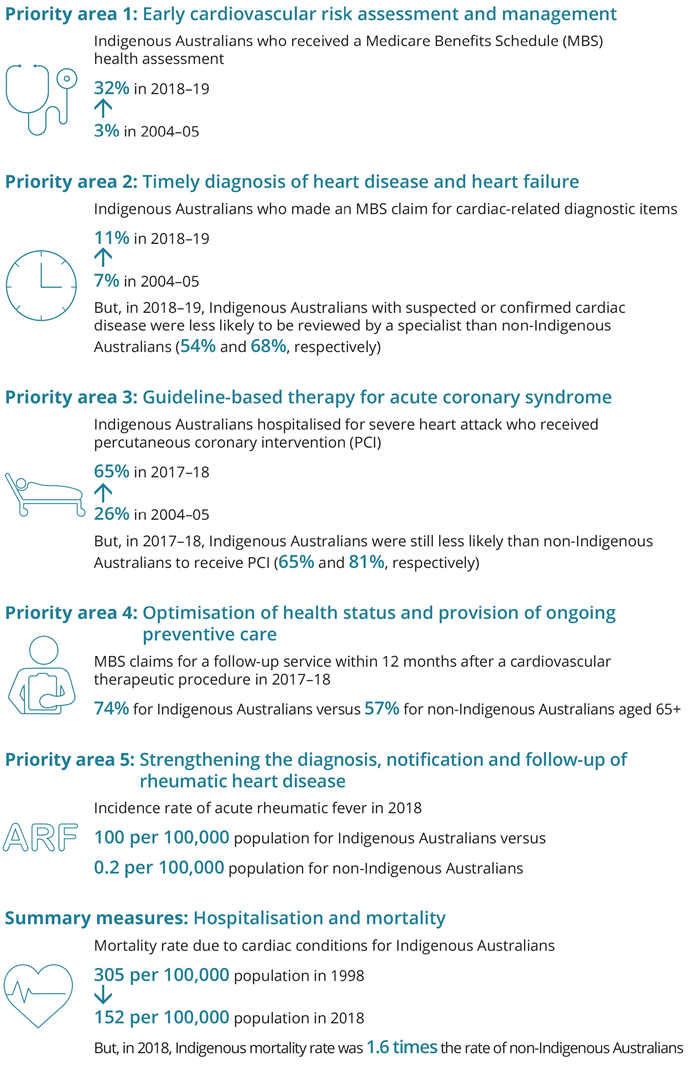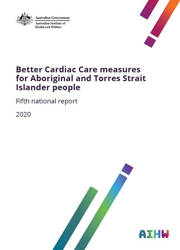Summary
The Better Cardiac Care for Aboriginal and Torres Strait Islander People project is an initiative of the Australian Health Ministers’ Advisory Council. It aims to reduce deaths and ill health from cardiac conditions among Aboriginal and Torres Strait Islander Australians.
Five priority areas consisting of 21 measures were developed to monitor the progress of the project. In this fifth national report, 15 measures reported in the earlier 4 reports are updated – including Measure 1.3, which is updated for the first time since the first annual report. One previously reported measure (5.4) could not be reported since the 2018–19 report due to issues with data quality. Data for the remaining 5 measures not yet reported are currently under development and are expected to be included in future reports.
Key findings
Some progress has been made toward better cardiac care for Indigenous Australians:
- The level of access for cardiac-related health services has improved. The proportion of Indigenous Australians who received Medical Benefits Schedule (MBS) health assessments, cardiac-related diagnostic MBS services and the recommended intervention following hospitalisation for a severe heart attack has been increasing over time.
- The mortality rate from cardiac conditions is falling among the Indigenous population.
But there are still challenges in some areas:
- Indigenous Australians with suspected or confirmed cardiac disease are less likely to be reviewed by a specialist than non-Indigenous Australians.
- Indigenous Australians are less likely than non-Indigenous Australians to receive the recommended intervention following hospitalisation for a severe heart attack.
- The incidence and recurrence rates of acute rheumatic fever among Indigenous Australians are much higher than among non-Indigenous Australians.
- While the mortality rate from cardiovascular disease is falling, it is still much higher among Indigenous Australians than among non-Indigenous Australians.
Better Cardiac Care key findings

Note: All rates shown are age-standardised, except for rates shown in priority areas 4 and 5.
Summary
Key findings
1. Introduction
- Better Cardiac Care project
- Reporting on the Better Cardiac Care measures
- Data development plan
2. Results
- Priority area 1: Early cardiovascular risk assessment and management
- Priority area 2: Timely diagnosis of heart disease and heart failure
- Priority area 3: Guideline-based therapy for acute coronary syndrome
- Priority area 4: Optimisation of health status and provision of ongoing preventive care
- Priority area 5: Strengthening the diagnosis, notification and follow-up of rheumatic heart disease
- Summary measures: hospitalisation and mortality
Appendix A: Data sources
Appendix B: Technical specifications
Appendix C: Summary results, by measure
Appendix D: Data Development Plan summary tables, by priority area
End matter: Acknowledgments; Abbreviations; Symbols; Glossary; References; List of tables; List of figures



